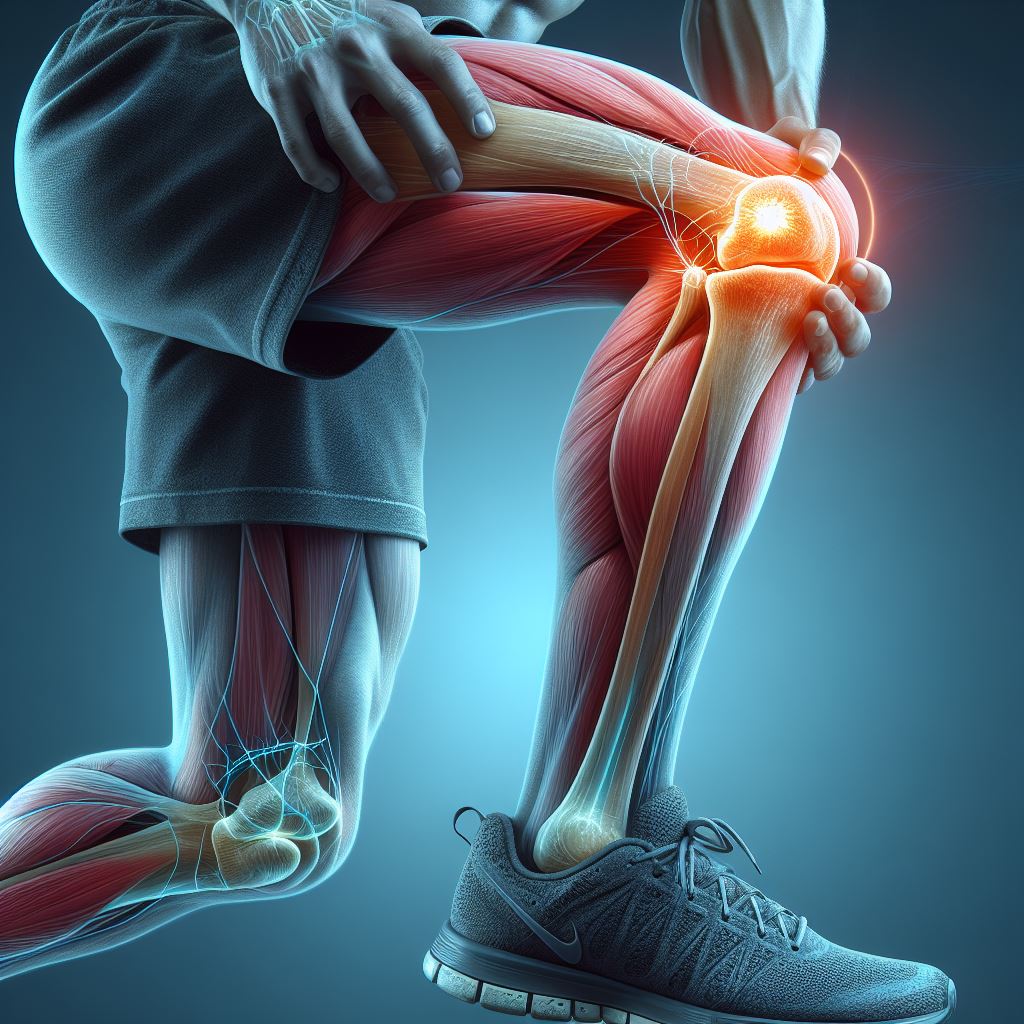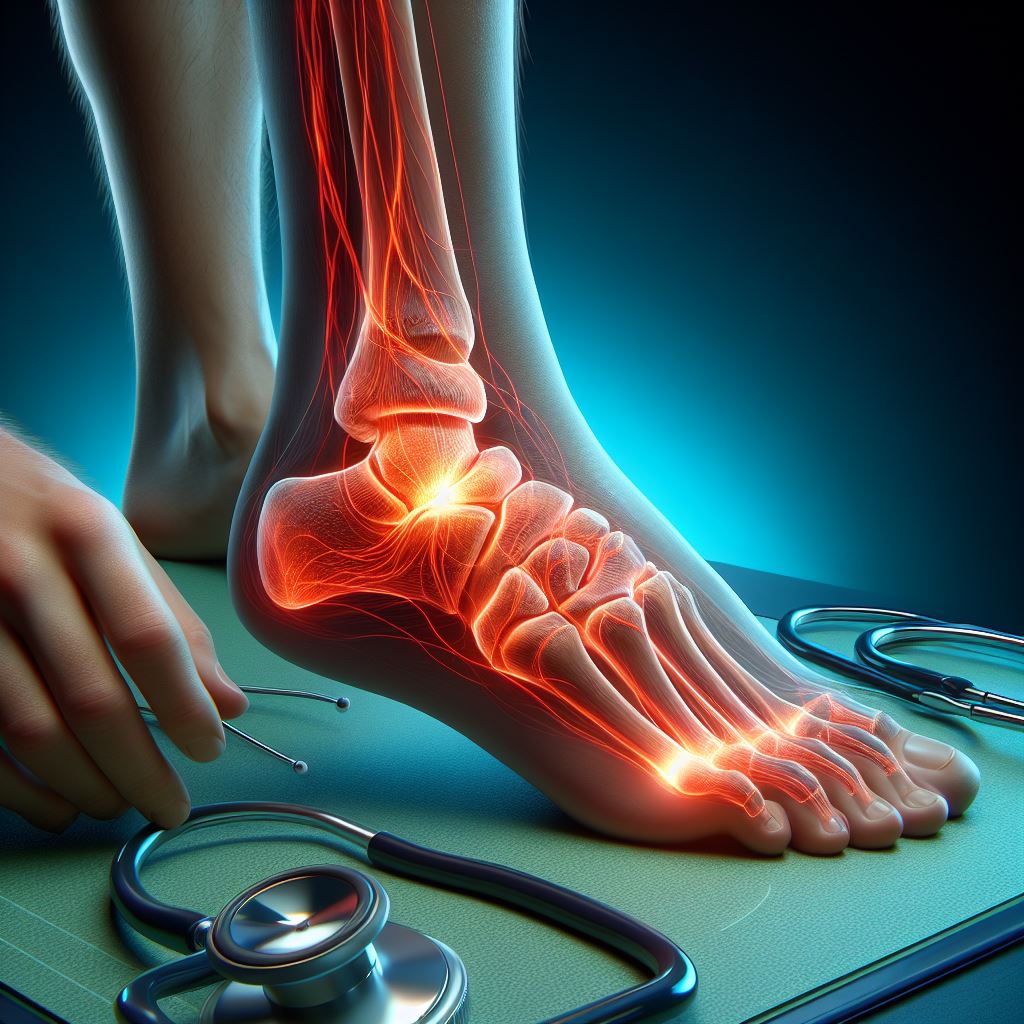Running is a great way to remain fit and have fun! It resembles a game where you can advance in strength and speed. However, running can occasionally cause boo-boos. We will discuss runner’s knee, plantar fasciitis, and shin splints as three common running-related injuries. In order to keep running and having fun, we’ll also learn how to avoid running injuries and what to do in the case that you do sustain one.

Why Do They Occur?
Running Too Much: Your legs may become sore and fatigued if you run a lot without stopping.
Poor Shoe Selection: Shoe selection that is too small, too big, or too low-profile might lead to shin splints.
Hard Surfaces: Running on concrete or other hard surfaces can be very taxing on your legs.
Foot Issues: Your shins may pain worse if your feet are flat or have high arches.
How to Avoid Shin Splints and Other Running-Related Injuries:
Go Slow: Avoid sprinting too quickly or too far too soon. Gradually increase the distance and speed you run.
Wear Good Shoes: Invest in supportive, well-fitting running shoes for your feet. As they age, be sure to replace them.
Exercise: Perform workouts to strengthen your legs. Your shins will be supported by this.
Run Correctly: To prevent putting additional strain on your legs, learn how to run correctly.
Treatment for Shin Splints:
Rest: Until the pain subsides, stop running and take it easy. Your legs require time to recover.
Ice: To reduce pain and swelling, apply ice to your shins for 15 to 20 minutes many times a day.
Support: To reduce swelling and provide support for your legs, use compression wraps.
Stretch and Strengthen: To stretch and strengthen your legs, use mild activities.
Slow Return: As soon as you’re feeling better, go back to running slowly. Resuming your rapid running shouldn’t be rushed.

Why Does That Occur?
Running Too Much: Excessive running might put undue strain on your knees.
Weak Muscles: Because they don’t adequately support your knees, weak muscles in the area around your knees can hurt.
Poor Running Form: Knee pain might result from running with improper form. It simply doesn’t fit right, similar to when the incorrect pieces are used in a puzzle.
Poor Shoes: Knee pain might result from wearing shoes that don’t provide enough support for your feet.
How to Avoid Getting Knee Pain While Running:
Develop the strength of your hip and thigh muscles by strength training. This aids with knee support.
Wear Proper Footwear: Make sure your running style and supportive shoes fit your feet.
Run Correctly: To lessen the strain on your knees, work with a coach or follow advice to enhance your running form.
Gradual Training: progressively increase your running pace and distance. Avoid doing too much running at once.
Ways to Handle Runner’s Knee:
Rest: Stop running until your knee is more comfortable. You can engage in low-impact sports like cycling or swimming.
Ice: To relieve discomfort and swelling, apply ice to your knee for 15 to 20 minutes many times a day.
Support: To relieve pain and provide support for your knee, use knee braces or wraps.
Elevate: To aid in reducing edema, raise your leg.
Physical Therapy: You can learn exercises from a physical therapist to increase flexibility and strengthen the muscles surrounding your knee.
Slow Return: As soon as you’re feeling better, go back to running slowly. Start with less strenuous, shorter runs.

Why Does That Occur?
Running Excessively: Excessive distance or speed running might aggravate inflammation.
Bad Shoes: Your feet may suffer if your shoes don’t provide enough arch support.
Tight Calves: Having tight calves might put additional strain on your feet.
Foot Issues: Plantar fasciitis may worsen in those with high arches or flat feet.
How to Avoid Foot Injuries During Running:
Put on Comfortable Shoes: Put on shoes with supportive and cushioned arches. As they age, replace them.
Stretching: To maintain your flexibility, stretch your calves and the bottoms of your feet daily.
Strengthening: To improve support, strengthen your lower legs and feet.
Gradual Training: To avoid overuse, gradually increase your running distance and speed.
Plantar Fasciitis Treatment:
Rest: Stop running until your foot is more comfortable. Allow time for your foot to heal.
Ice: To reduce discomfort and swelling, apply ice to your heel for 15 to 20 minutes many times a day.
Stretching: To ease stress and increase range of motion, stretch your calves and foot.
Support: To add further support, put orthotic inserts in your shoes.
Physical Therapy: You can learn foot strengthening and stretches from a physical therapist.
Slow Return: As soon as you’re feeling better, go back to running slowly. Start with quick, low-impact runs and work your way up to longer distances.
Running Tips to Avoid Injuries
Warm-Up and Cool-Down: Prior to running, always warm up, and afterward, cool down. This keeps your muscles ready and helps you avoid injuries.
Pay attention to your body; if something aches, take a break and relax. Avoid trying to endure the agony.
Maintain Hydration: To keep your body hydrated and your muscles functioning properly, drink a lot of water.
Run on Soft Surfaces: To lessen the strain on your legs and feet, try running on routes made of grass or soil rather than hard concrete.
Choose the Correct Shoes: Make sure your running shoes are supportive and properly fitting.
Take Breaks: Give your body enough time to relax and heal.
Cross-train: To give your running muscles a rest, engage in other activities such as bicycling, swimming, or playing different sports.
Resuming Following Injury
It’s crucial to relax and adhere to the previously discussed treatment protocols if you sustain an injury. Once you’re feeling better, go back to your cautious running pace. Start off with quick, easy runs and progressively increase your speed and distance. Never ignore your body’s signals to stop for a while if you experience any pain.
In summary
Running is a fantastic way to remain in shape and have fun, but you need exercise caution to prevent injury. You may run safely and enjoy your time outside by paying attention to these advice on how to avoid common running problems, such as knee pain. In order to resume running injury-free, always remember to take care of yourself and adhere to the healing process if you do get wounded. Cheers to your running!
I have stated throughout this blog a few things you must do to prevent and treat injury. The biggest thing you must do is get the right equipment. I have provided some recommendations below to assist:
Top 12 Running Shoe Recommendations
The Best Runner’s Log Book Ever: The Complete Running Log Book for Training
Watch the video: The Correct Way of Running
Youtube Video: https://youtu.be/Co9WZuB5mwU
Because some of the above are affiliate links, If you purchase some of the selected items from the list above I will collect a nominal commission.
Leave a comment